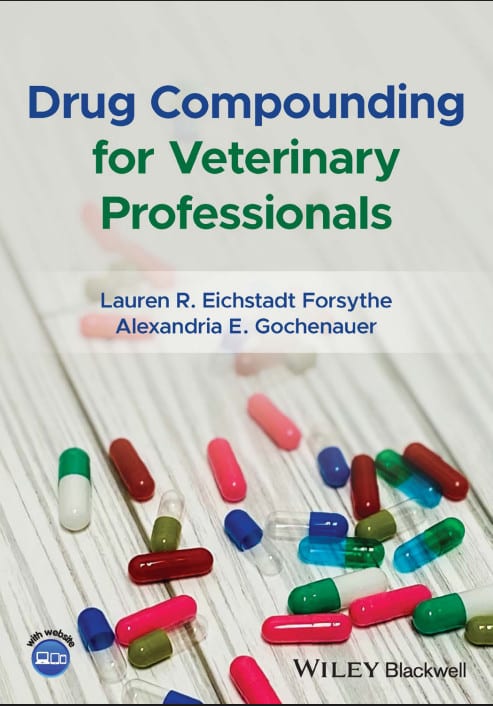
By Lauren R. Eichstadt Forsythe and Alexandria E. Gochenauer
Drug Compounding for Veterinary Professionals provides an accessible, easy-to-use guide to all aspects of prescribing individualized mixtures of medications in veterinary practice. Its emphasis on practical knowledge and its discussion of both in-house and external options make it a comprehensive introduction to using compounded medications in animals. It guides practitioners through every step of the process, from formulating a compound to working with outside pharmacists. Drug Compounding for Veterinary Professionals is essential for any veterinary practitioner, veterinary pharmacologist, or student looking to understand this crucial component of patient care.
The book presents guidance on how to get more information on current regulations, consider the risks and benefits, develop formulations, and more.
Features
- Figures and line drawings illustrating effective compounding techniques and concepts
- An emphasis on practical knowledge for clinical use
- Answers to frequently asked questions about drug compounding
Table of Contents
-
Compounding Regulations
-
Organizations and Regulatory Agencies
-
Food and Drug Administration
-
United States Pharmacopeia
-
Drug Enforcement Administration
-
State Boards of Pharmacy
-
State Veterinary Boards
-
Compliance Policy Guides and Guidance Documents
-
What Is Compounding?
-
The Food, Drug, and Cosmetic Act
-
Animal Medicinal Drug Use Clarification Act
-
Preparing Compounds from Approved Products or Pure Drug Powder
-
Federal vs. State Law
-
Office Use Compounding
-
Drug Quality and Security Act
-
Finding Additional Information
-
Risk–Benefit Analysis of Compounded Medications
-
Benefits of Compounded Products
-
Appropriate Use of Compounded Medications
-
Risks of Compounded Medications
-
Compounded (USP) vs. Manufactured (cGMP)
-
Literature on Risks (Potency, Stability, Efficacy)
-
Specific Risks by Compound Type
-
Ingredient Source Decisions
-
Patient-Specific vs. Office Use Compounding
-
Adverse Event Reporting
-
Identifying Formulation Issues
-
Drug Recalls
-
Selecting a Compounding Pharmacy
-
Client Education
-
Reducing Risk in Practice
-
Conclusion
-
Beyond-Use Dating (BUD)
-
Factors in Assigning BUDs and Expiration Dates
-
USP Default BUDs
-
Stability Studies and Evaluation
-
In-House BUD Determination
-
BUD Considerations for Prescribing
-
Conclusion
-
Identifying High-Quality Compounding Pharmacies
-
Case Studies
-
Evaluation Criteria
-
Pharmacy Practices and Staff Expertise
-
Familiarity with Veterinary Needs
-
Culture and Communication
-
How to Evaluate (Website, Tour, Interview)
-
Conclusion
-
Formulation Development
-
Dosage Forms
-
Oral (Solutions, Suspensions, Syrups, Capsules, Tablets, Treats, Emulsions, Pastes, Powders)
-
Transdermal
-
Topical (Solutions, Ointments, Shampoos, Mousses, Emulsions, Creams, Gels)
-
Otic (Solutions, Suspensions, Ointments)
-
Other (Rectal, Intranasal, Injectable, Ophthalmic)
-
Ingredients and Characteristics
-
Selection, Solubility, pH, Chelators, Preservatives, Flavors, Salts, Excipients
-
Beyond-Use Dates
-
Resources and Calculations
-
Compounding Formulations to Avoid
-
Formulation Development Process
-
Formulation Assessment
-
Compounding in House
-
Documentation
-
Quality Assurance and Control
-
Labeling, Packaging, Storage
-
Techniques (Trituration, Sifting, Dilution, Wetting, Tracers)
-
Equipment (Mortars, Glassware, Scales, Cleaning)
-
Staff Training and Instructions
-
Species-Specific Needs
Index



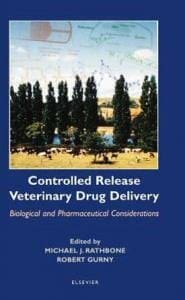
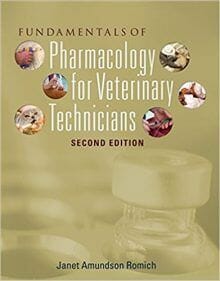



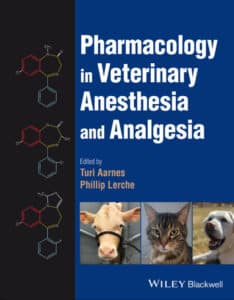
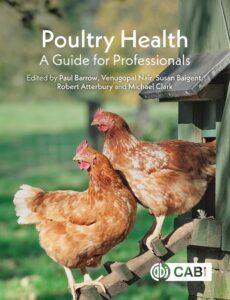





![Ettinger’s Textbook of Veterinary Internal Medicine 9th Edition [PDF+Videos] Ettinger’s Textbook of Veterinary Internal Medicine 9th Edition [True PDF+Videos]](https://www.vet-ebooks.com/wp-content/uploads/2024/10/ettingers-textbook-of-veterinary-internal-medicine-9th-edition-100x70.jpg)

![Textbook of Veterinary Diagnostic Radiology 8th Edition [PDF+Videos+Quizzes] Thrall’s Textbook of Veterinary Diagnostic Radiology, 8th edition PDF](https://www.vet-ebooks.com/wp-content/uploads/2019/09/textbook-of-veterinary-diagnostic-radiology-8th-edition-100x70.jpg)






